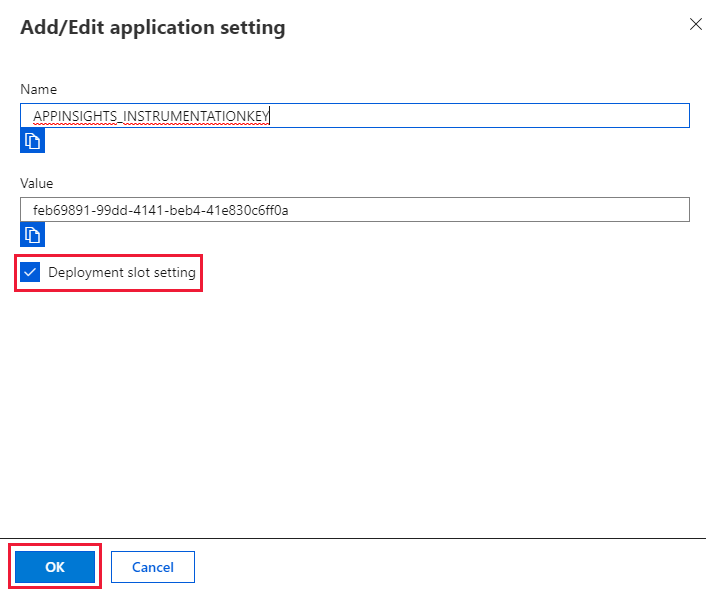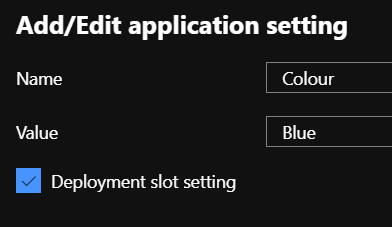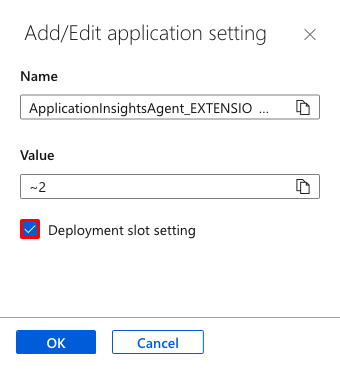Understanding App Service Deployment Slots
Azure App Service deployment slots are powerful features that allow developers to deploy and test new versions of their web applications without affecting the production environment. The primary purpose of deployment slots is to enable zero-downtime deployments and facilitate A/B testing, ensuring a seamless user experience. Think of them as live environments with their own hostnames. The production slot represents the live application that users interact with, while staging slots provide isolated environments for testing and validating updates. Configuring a “deployment slot setting” allows tailoring each environment to its specific needs.
One of the key benefits of using deployment slots is the easy rollback capability. If an issue arises after deploying a new version to the staging slot, it can be quickly swapped back to the previous version without impacting the live application. This minimizes downtime and reduces the risk associated with deploying new code. Each deployment slot can have its unique configuration settings, including “deployment slot setting” for application settings and connection strings, enabling you to test different configurations without affecting the production environment.
Furthermore, deployment slots support various scenarios, such as pre-production testing, load testing, and user acceptance testing. By configuring a “deployment slot setting” specific to each stage, you can simulate real-world conditions and identify potential problems before they impact your users. This proactive approach significantly improves the quality and stability of your applications. Utilizing deployment slots and their respective configurations offers a streamlined and safe way to manage application updates and experiment with new features. The flexibility and control provided by “deployment slot setting” are essential for modern application development and deployment practices, minimizing risks associated with software releases. With a correctly configured “deployment slot setting”, deployment slots empower teams to iterate rapidly, deliver high-quality software, and maintain a continuous deployment workflow, resulting in applications that are both reliable and innovative.
Configuring Application Settings in Deployment Slots: A How-To Guide
This section offers a practical guide on configuring application settings within Azure App Service deployment slots. Configuring deployment slot settings is a straightforward process that can be accomplished using the Azure portal, Azure CLI, or PowerShell. The following step-by-step instructions with screenshots and code snippets will provide clarity.
Using the Azure Portal:
1. Navigate to the Azure portal and select your App Service.
2. Under the “Settings” section, find and click on “Deployment slots.”
3. Choose the specific deployment slot you want to configure.
4. In the deployment slot’s settings, locate “Configuration” and then “Application settings”.
5. Add or modify application settings as needed. For instance, to add a new setting, click “New application setting.” Enter the name and value. It’s important to mark a setting as a deployment slot setting if you want it to remain specific to that slot during a swap.
6. Click “OK” and then “Save” to apply the changes.
The Azure portal provides a user-friendly interface for managing deployment slot setting configurations.
Using Azure CLI:
The Azure CLI allows for scripting and automation of deployment slot setting configurations. The `az webapp config appsettings set` command is the primary tool. Here’s an example:
az webapp config appsettings set --resource-group MyResourceGroup --name MyAppService --slot Staging --settings SettingName="SettingValue" SlotSetting=true
In this command, `–slot Staging` specifies the target deployment slot. `SlotSetting=true` indicates that this setting is specific to the “Staging” deployment slot. Remember to replace `”MyResourceGroup”`, `”MyAppService”`, `”Staging”`, `”SettingName”`, and `”SettingValue”` with your actual resource group, app service name, deployment slot name, setting name, and setting value, respectively. This method is ideal for incorporating deployment slot setting configurations into automated deployment pipelines.
Using PowerShell:
PowerShell offers another powerful way to manage deployment slot setting configurations. The `Set-AzWebAppSlot` cmdlet is used.
Set-AzWebAppSlot -ResourceGroupName "MyResourceGroup" -Name "MyAppService" -Slot "Staging" -AppSettings @{"SettingName"="SettingValue"}
To make a setting slot-specific, you would typically manage it directly within the slot’s configuration, similar to the Azure CLI approach. PowerShell is beneficial for users already familiar with the scripting language and for integrating deployment slot setting management into existing PowerShell scripts.
Leveraging Slot-Specific Connection Strings
Configuring connection strings specific to a deployment slot is essential for robust testing and development practices within Azure App Service. This functionality allows developers to experiment with new database configurations or utilize different data sources in staging environments without risking the integrity of production data. By isolating connection strings, the application can seamlessly switch between environments during slot swaps, ensuring a smooth transition and preventing unintended consequences. Setting a dedicated deployment slot setting for connection strings is crucial for maintaining data integrity.
To configure slot-specific connection strings, navigate to the Azure portal and select the desired App Service. Within the App Service blade, access the “Configuration” section. Here, you can add or modify connection strings. Crucially, enable the “Deployment slot setting” option for each connection string that should be specific to the current slot. This flag ensures that the connection string remains local to the slot and is not inadvertently applied to other slots, including the production slot. This isolation prevents the staging environment from accidentally modifying or accessing live production databases. Consider a scenario where a staging slot needs to connect to a test database. By marking the connection string as a deployment slot setting, it will only point to the test database when the application is running within that specific staging slot. The production slot, conversely, will maintain its connection to the production database.
The isolation afforded by slot-specific connection strings is paramount for preventing data corruption and ensuring the reliability of the application. Without this isolation, testing new database schemas or data migration scripts in a staging environment could inadvertently impact the production database, leading to data loss or inconsistencies. Furthermore, it’s best practice to use separate Azure SQL Database instances or other data stores for development, staging, and production environments. This segregation, coupled with the use of deployment slot settings for connection strings, provides a layered defense against accidental data breaches or corruption. This separation ensures that the production environment remains pristine and unaffected by testing activities. In summary, correctly configuring and managing deployment slot setting for connection strings is a cornerstone of responsible Azure App Service deployment management. It’s a fundamental practice that contributes significantly to the stability, security, and overall quality of the application deployment lifecycle.
Swapping Deployment Slots for Seamless Updates
The process of swapping deployment slots is a cornerstone of achieving seamless updates in Azure App Service. Swapping a deployment slot involves exchanging the roles of two slots, typically promoting a staging deployment to the production environment. This operation is designed to ensure zero downtime for end-users, enhancing application availability. The built-in warm-up functionality is a key aspect of this process, allowing the application in the staging slot to initialize and prepare before it starts receiving live traffic. This warm-up phase can include tasks such as pre-compiling code, connecting to databases, and caching frequently accessed data, which minimizes the initial response time when the slot becomes active. Successfully managing a deployment slot setting requires careful consideration of the warm-up procedures.
Before a swap occurs, Azure App Service performs a series of pre-swap validation checks. These checks are crucial for identifying potential issues that could arise after the swap and disrupt the application’s functionality. The validations include verifying that the application in the staging slot is healthy, that all necessary dependencies are available, and that there are no configuration conflicts. If any of these checks fail, the swap operation is automatically aborted, preventing the problematic deployment from reaching production. By addressing these issues proactively, organizations can maintain the stability and reliability of their applications. This proactive approach to deployment slot setting management is essential for preventing production incidents.
To initiate a swap, one can use the Azure portal, Azure CLI, or PowerShell. The portal provides a user-friendly interface for selecting the source and target slots and initiating the swap. The Azure CLI and PowerShell offer command-line options for automating the swap process, making it suitable for integration into CI/CD pipelines. During the swap, application settings and connection strings configured as “slot settings” remain with their respective slots. This ensures that each environment maintains its specific configurations. Non-slot-specific settings are applied to all slots. After the swap, traffic is seamlessly routed to the newly promoted application, while the previous production deployment remains in the staging slot, serving as a rollback option if needed. This efficient management of deployment slot setting ensures a smooth transition and minimizes risks.
Managing Deployment Slot Settings with Azure DevOps
Integrating deployment slot setting configuration into a CI/CD pipeline using Azure DevOps provides a robust and automated approach to managing application deployments. This integration streamlines the process of setting application settings and connection strings as part of the deployment, ensuring consistency and reducing the risk of manual errors. Leveraging Azure DevOps for deployment slot setting management promotes Infrastructure as Code (IaC) principles, enhancing repeatability and control over the deployment process.
To automate deployment slot setting configurations with Azure DevOps, begin by defining your application settings and connection strings within your Azure DevOps pipeline. Use Azure CLI tasks or PowerShell scripts to interact with the Azure App Service and modify the deployment slot settings. For example, you can use the `az webapp config appsettings set` command to update application settings in a specific deployment slot. Similarly, the `az webapp config connection-string set` command allows for the configuration of connection strings that are slot-specific. Define variables within your Azure DevOps pipeline to manage different environment configurations, like development, staging, and production. By parameterizing your settings, you create a flexible and reusable deployment process. Incorporate tasks to swap deployment slots automatically after the configurations are applied and verified. Pre-swap validation checks can be integrated into the pipeline to ensure that the new deployment is healthy before being promoted to production.
The advantages of using Azure DevOps for deployment slot setting management are numerous. Automation reduces the potential for human error and ensures consistent configurations across environments. IaC principles allow you to version control your infrastructure configurations, making it easy to track changes and roll back to previous versions if necessary. Integrating deployment slot setting management into your CI/CD pipeline facilitates faster and more reliable deployments. This approach reduces downtime and improves the overall efficiency of your development and operations teams. Furthermore, by automating the configuration process, you free up valuable time for developers and operations personnel to focus on other critical tasks, such as feature development and system optimization. Consistently managing deployment slot settings through Azure DevOps ensures a more streamlined and secure deployment process.
Differentiating Between Slot-Specific and Non-Slot-Specific Settings
Understanding the distinction between slot-specific and non-slot-specific settings is crucial for effective Azure App Service deployment slot management. Slot-specific settings remain within a particular deployment slot, while non-slot-specific settings apply to all slots within the App Service, including the production slot. This difference significantly impacts application behavior, especially during slot swaps. Incorrect configuration can lead to unexpected outcomes and potential downtime. Therefore, a clear understanding is essential.
Application settings and connection strings can be configured as either slot-specific or non-slot-specific. A common example of a slot-specific setting is a debugging flag. This flag might be enabled in a staging deployment slot to facilitate testing but should remain disabled in production. Conversely, settings like the application’s name or logging configuration might be non-slot-specific, ensuring consistent behavior across all environments. Connection strings often require careful consideration. A staging slot might utilize a test database, mandating a slot-specific connection string to prevent unintended modifications to production data. When a deployment slot setting is marked as slot-specific, it does not transfer during a slot swap. This behavior helps maintain environment isolation. However, forgetting to mark a setting as slot-specific when it should be can cause the production application to use the staging environment’s configuration after a swap.
The implications of choosing between slot-specific and non-slot-specific deployment slot settings directly affect application behavior during a swap operation. Consider a scenario where an API endpoint URL is stored as an application setting. If this setting is not slot-specific and the staging slot contains a different URL, swapping the slots will cause the production application to start using the staging URL. This can lead to application errors or connectivity issues. To avoid such problems, thoroughly evaluate each application setting and connection string. Determine whether it should be tied to a specific environment or shared across all slots. Leverage the Azure portal, Azure CLI, or PowerShell to correctly configure each deployment slot setting. Proper planning and configuration ensure smooth and predictable deployments, minimizing the risk of unexpected issues after a slot swap. Consistent review of deployment slot setting configurations as part of your deployment process is a recommended practice. This ensures accuracy and prevents configuration drift over time, supporting reliable application performance and maintainability.
Troubleshooting Common Deployment Slot Configuration Issues
Encountering issues with deployment slot settings is a common part of the application development lifecycle. One frequent problem involves incorrect connection strings, leading to application errors when accessing databases or other external resources. Verify that the connection strings in the deployment slot settings match the intended environment. Use the Azure portal to double-check the values and ensure they are correctly formatted. A missing application setting can also cause unexpected behavior. This often arises when a new setting is added to the production environment but not replicated to the deployment slot. Ensure all necessary application settings are present and correctly configured in each slot. This meticulous approach to deployment slot setting verification can save significant debugging time.
Failed slot swaps can be disruptive. These failures often stem from pre-swap validation checks failing. Examine the Azure activity logs for detailed error messages that explain why the swap was prevented. Common causes include unhealthy application instances in the staging slot, database connection problems, or unmet dependency requirements. Implementing thorough pre-swap testing is crucial to identify and resolve these issues before they impact the production environment. Leverage Azure Monitor logs to proactively diagnose problems. Configure alerts to notify you of errors or performance anomalies in the deployment slots. Analyzing these logs provides valuable insights into application behavior and helps pinpoint the root cause of configuration-related issues, including those related to deployment slot setting mismatches. Another potential cause of failed swaps is incorrect routing rules defined within the application gateway or load balancer. Ensure that the traffic is correctly routed to the active deployment slot after the swap.
Diagnosing issues related to deployment slot setting discrepancies requires a systematic approach. Start by comparing the configuration settings between the production slot and the deployment slot. Use the Azure CLI or PowerShell to export the settings and compare them using a text comparison tool. Look for differences in connection strings, application settings, and other configuration values. Examine the application’s logs within the deployment slot to identify any errors or warnings related to configuration settings. Pay close attention to error messages that indicate missing settings or invalid values. Furthermore, test the application thoroughly in the deployment slot before performing a swap. This includes running integration tests, performance tests, and user acceptance tests to ensure that the application behaves as expected. Proactive monitoring and thorough testing are essential for preventing and resolving deployment slot configuration issues. Using Kudu console for advanced debugging and diagnostics to get a shell to your app service instance.
Best Practices for Secure and Efficient Deployment Slot Management
Managing deployment slots effectively in Azure App Service requires a strategic approach that prioritizes security, performance, and cost efficiency. A key aspect is adhering to security considerations to protect sensitive data and prevent unauthorized access. Implement proper access controls and regularly review permissions to ensure only authorized personnel can modify deployment slot setting configurations. Leverage Azure’s built-in security features, such as Azure Active Directory integration, to streamline authentication and authorization processes. Regularly update application dependencies and frameworks to patch security vulnerabilities and maintain a robust security posture across all deployment slot setting environments.
Performance optimization is another critical aspect of deployment slot setting management. Optimize application code and configurations to minimize resource consumption and improve response times. Utilize Azure Monitor to track key performance metrics and identify potential bottlenecks. Configure auto-scaling rules to dynamically adjust resources based on traffic patterns, ensuring optimal performance during peak loads. Implement caching strategies to reduce database load and improve application responsiveness. Regularly review and optimize database queries to enhance data retrieval efficiency. Employ content delivery networks (CDNs) to accelerate content delivery to users across geographical regions, improving the overall user experience. By implementing these strategies, organizations can ensure their applications perform optimally in all deployment slot setting environments.
Cost management and proper environment segregation are essential for efficient deployment slot setting management. Monitor resource utilization and identify opportunities to reduce unnecessary expenses. Leverage Azure Cost Management tools to track spending and identify cost-saving opportunities. Implement resource tagging to categorize and track costs across different deployment slot setting environments. Properly segregate environments to prevent accidental or malicious interference between production and non-production slots. Use separate Azure subscriptions or resource groups to isolate critical resources and data. Establish clear naming conventions and documentation practices to ensure consistency and clarity across all deployment slots. By adhering to these best practices, organizations can effectively manage costs, maintain environment integrity, and ensure reliable and scalable application deployments when working with deployment slot setting.



